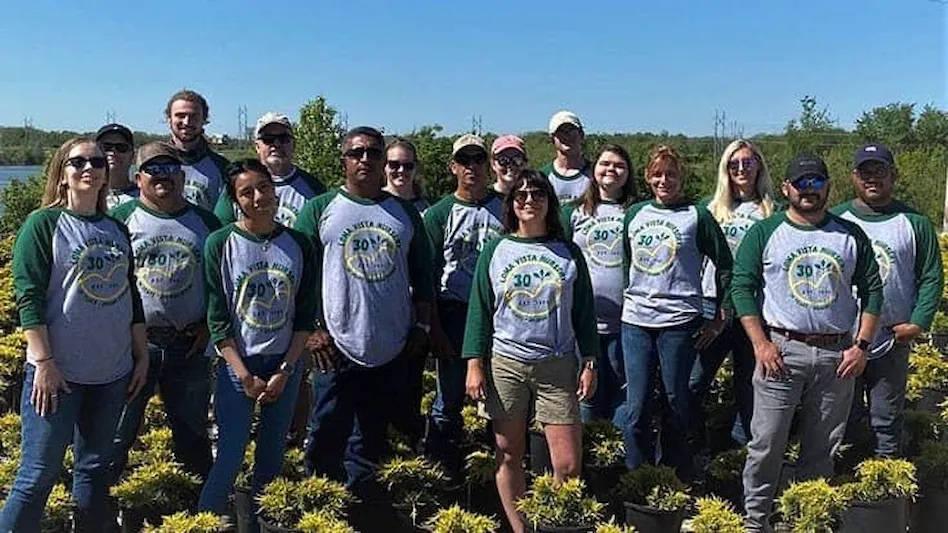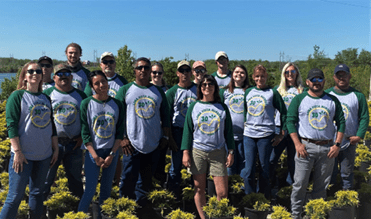

Here we are, in 2022. We start the new year where we left the past one. Our industry, like so many others, is facing unique challenges and exciting opportunities — especially in the areas of employee hiring and retention.
We’re well aware of the “Great Resignation” that began during the height of the pandemic and proceeded through all of 2021. So, I won’t rehash the well-documented statistics, reasons and projections for where we are as a national workforce and how it all impacts our industry. For that background, take a look at Charlie Hall’s research on the AmericanHort website and State of the Industry coverage in issues of this magazine.
What I will talk about is why it’s a smart idea to secure your employee bench no matter what condition the economic climate is in or our industry’s workforce.
This concept came to me years ago while reading Jim Collins’ book “Good to Great.” If you haven’t read it, I highly recommend doing so if you’re in a leadership position or aspire to be. Jim’s premise for hiring — and retaining — great employees is that the right person has to be on the right bus and in the right seat.
“Securing the bench” (my analogy since I come from a sports family) is a mindset of resiliency. It’s a switch in thinking from “I need to fill that position” to “How can I expand the culture of my business to attract and retain the right partners to help my company meet its goals and reach its full potential?”
Here’s how I see my team.
Sure, it’s my name, and my dad’s, behind the risk, liability and day-to-day operations that are the bottom line of the business. But that talented team of employees I have out there, working hard and representing us well? They are our partners. They are the compass that points our business in the direction we’ve defined as a team together. Loma Vista Nursery cannot as effectively meet its goals or reach its full potential without its partners.
If we’re looking to fill vacancies, manage people’s personalities and get them to show up on time — then yep, it’s a grind and it’s hard. Securing the bench with the right people in the right positions provides flexibility in good times and peace of mind to withstand challenging climates.
Our employee playbook — something I recommend every company develop for their business — outlines roles, responsibilities and procedures in detail for all members of our team. Work with your employees to create one, and then review it and update it together regularly. Make sure new hires become part of the conversation, too.
Here are five strategies for securing your bench.
1. Anticipate and plan
Anticipate that staff will leave. You will have turnover. Plan for it.
Practicing open communication, active listening and setting realistic roadmaps for individual and company success is part of the “anticipate and plan” process. Involve employees in planning from the get-go so they understand the objectives.
Have open dialogue about processes, procedures, what works and what doesn’t, and update the playbook together. Review it often. This ensures buy-in from everyone on the team and that is in everyone’s best interest.
With your playbook in hand, cross-train your people to double-check that the execution of roles and responsibilities is correct. Compare notes, document clarifications and make playbook changes together. Should they need to step in, someone who is cross-trained knows the playbook is current and accurate because they were part of the process.
2. Craft your culture
Create a culture that attracts and retains people who are excited about the journey you’re taking together. We’re always asking ourselves what we’re doing to attract and retain talent and if we have the right measures in place to ensure our business is resilient when someone leaves.
We’re also realistic that not every candidate who applies will be qualified for a seat on our bench. I care way more about attitude than skill set because a lot of what we do can be learned and attitude underlines our culture.
A company that is active in its industry, gives back to its community and supports the professional development of its employees is an exciting place to work. A culture that is positive, nurturing and encourages teamwork builds trust, confidence and internal bonds that are motivating and inspiring.
Give employees permission to be your company’s ambassadors. This gives employees visibility in the industry, elevates their professional status and is good for your brand. Because they know you support them, encouraging their involvement builds loyalty and confidence.
3. Lead with communication
Don’t expect employees at all levels of your company to read your mind and don’t expect to read theirs either.
In my experience, nailing the job description is the No. 1 way to have a good start with new hires and maintain open communication with employees. We provide detailed information when we develop our job descriptions and we involve employees who have cross-trained in the open position to weigh in.
Our HR manager checks in with new employees at 30, 60 and 90 days and we tweak along the way. We meet twice annually with current employees to revisit their responsibilities and help them identify and meet their professional goals. This two-way communication is at the heart of our culture.
We pay close attention to how we communicate with employees and onboard new hires because that sets the tone for the employee/employer relationship. Modeling leadership with managers and staff defines their day and the commitment they make to their work.
We don’t ever know for sure what’s in someone else’s head and that’s where transparent communication comes in. Ask questions about how the team member views themselves and their role in the company and what they aspire for that to be.
I’ve found that telling the story of our company and its culture — and reminding employees of their individual successes — helps them internalize its values and feel ownership in their contributions. It also lets them know that I’m proud to have them on our team.
4. Accept honest mistakes
Education and training go hand-in-hand when you’re staffing positions and securing your bench, along with acceptance that honest mistakes are going to happen.
What do we do as business owners and leaders when we make a mistake? We get in there. We figure stuff out. We learn a few things. Then we move on.
We can’t have a different expectation of our people. That’s not fair. They also need to learn by making mistakes — and the thing about making mistakes is that when they happen so does growth.
As long as they aren’t mistakes that are going to put you out of business or cost the company more than they can afford to part with, employees have to be allowed to make mistakes because especially in the business we’re in — mistakes can happen and I’m not talking about the fat finger on the keyboard that inverses a number. I’m talking about trying something new that might get a better result but may or may not work. You don’t know unless you try and I always want my team to try. Especially in plant production, it’s pretty important to have wiggle room for mistakes.
Of course, a culture of doing things the right way and following the process is key, but there has to be room for ingenuity and creativity. That’s where flexibility comes in — our playbook provides for processes that we want people to follow, but my belief is that if you think there’s a better way to do something, let’s try it. If it works, we’ll update the process.
5. Lead with intention
Those competing for our employees most likely aren’t in our industry.
They could be Walmart, Amazon or even city governments. We have to be financially competitive to those employers and that can be tough, but our industry offers benefits that are unique to us. We try really hard to understand what it’s like to be an employee at the companies outside of the green industry that we compete with for employees — and then we tell our story.
Investing leadership and energy in our brand’s growth and its role in the marketplace is my job 365 days of the year and I couldn’t do it without my partners and their support. My intention is very much on them, their growth and their success. For sure that benefits our company and for sure it benefits our industry.
Attracting and retaining talent requires wages at or above market. Job satisfaction requires communication. Professional growth requires work/life balance.
Being in the driver’s seat of a company requires understanding that we are all human and that we all have personal needs for health, safety and happiness. It’s true that respect and honesty make the days better and relationships stronger. That impacts our bottom line.
It’s normal to panic when a valuable employee leaves but go ahead and panic only for a minute. Then, rest easy that you have a playbook in place to fall back on. You have cross-trained your people, your employees are positioned in the right spot on the bench. They appreciate the company’s values and thrive in its culture. You have managers who are confident, secure and resilient and are on board to help you find the right next person for that open seat. Because that talent that you need “right now” to help with the coming season? It’s out there.

Explore the March 2022 Issue
Check out more from this issue and find your next story to read.
Latest from Garden Center
- GS1 US Celebrates 50-Year Barcode 'Scanniversary' and Heralds Next-Generation Barcode to Support Modern Commerce
- Weekend Reading 7/26/24
- Retail Revival: Making gardening contagious
- ‘Part of our story’
- Registration now open for Garden Center Fertile Ground Webinar Series
- Dramm introduces new hose, sprinkler attachments for home gardeners, nurseries
- Meet the 15 Retailers' Choice Awards winners from Cultivate'24
- 2024 Top 100 Independent Garden Centers List





